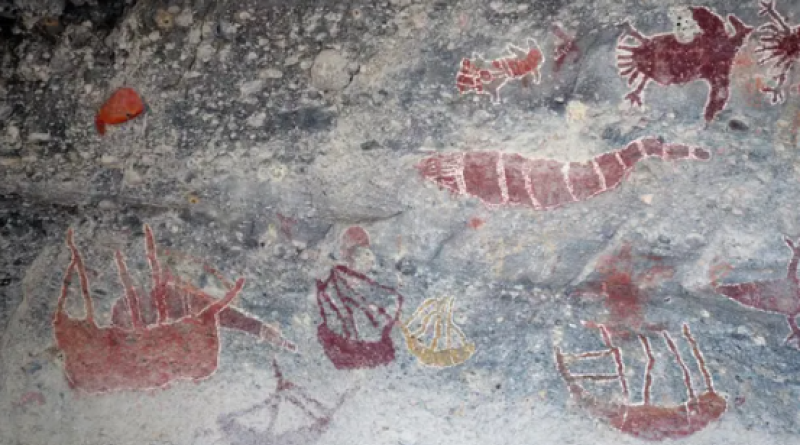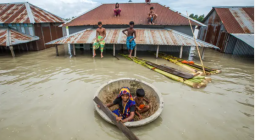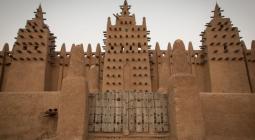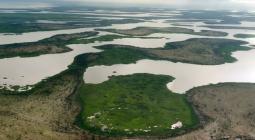Global heating is destroying rock art tens of thousands of years old, experts warn

Serious damage has already been done as erosion, fires, floods and cyclones increase in intensity
Rock art that has lasted tens of thousands of years is being destroyed by the climate emergency in a matter of years.
Coastal erosion, fires, floods and cyclones are among the extreme events predicted to get more severe with global heating. Archaeologists and historians are now warning that serious damage has already been done.
A Flinders University symposium was held on Tuesday in reaction to the sixth Intergovernmental Panel on Climate Change report, which warned of a “likely” global temperature rise of more than 1.5C, bringing more extreme weather events.
Some of the changes are now inevitable and “irreversible”, the report warned.
Dr Daryl Wesley, a multidisciplinary archaeologist from Flinders, told the forum about the destruction wreaked by Cyclone Monica, one of Australia’s most severe tropical cyclones, which smashed through Arnhem Land in 2006.

It blew down half the trees in a 50km wide swathe, pushing some into rock art sites and destroying them. After that, fire came, made more intense because of the fuel load Monica left behind.
Rock art is also often painted on sandstone, which sucks up lots of water. The heat from the fires expands the water, exploding the rock, and the sites are gone.
Wesley said a range of environmental and human factors were already degrading rock art – he has documented changes over the past 56 years.
But he said the climate crisis was “probably going to push that over an edge” as weather including cyclones gets even more severe.
“Today, we’re in sort of a critical situation or critical juncture,” he said.
A Griffith University archaeological scientist, Dr Jillian Huntley, has discovered salt crystals are collapsing rocks in the world’s oldest paintings, as the crystals expand and contract in changing weather.
Huntley studies rock art in the Australasian monsoon domain, which stretches from Australia’s north up into Indonesia, and she specialises in rock art in Sulawesi. She said the same effect caused by the salt can be seen through Australia’s top end and in the Pilbara in Western Australia. The crystallisation effect is being accelerated by climate change, she said, which is worse in the tropics.
“Those temperature increases are felt at a rate three times the rest of the world,” she said. “A 2.4C warming would be a 6C warming in the tropics, which would be absolutely catastrophic.”
She said the IPCC report was “conservative” and that a “severe, drastic and short-term cut in emissions” was necessary immediately.
“Not net zero by 2050,” she said. “Net zero as soon as possible.”
A symposium organiser and Flinders archaeology lecturer, Dr Ania Kotarba, said it was important to look to the past to plan for the future.
“Humans have been dealing with environmental challenges, climate extremes and natural disasters for millennia,” she said.
“While the severity and speed of changes now is new and pressing, archaeological and historical research can, and should, excavate examples of communities adapting to rapid change, often in a sustainable way, and offer insights for the future.”
A Flinders University environmental historian, Dr Alessandro Antonello, said in the meantime: “Humanity must both drastically reduce carbon emissions and adapt our lives to these rapidly changing circumstances.”
16 November 2021
The Guardian




